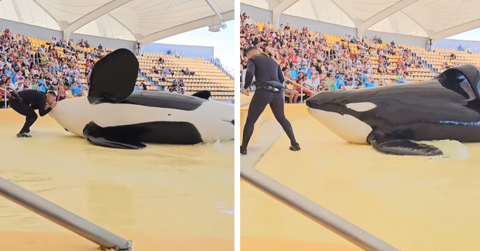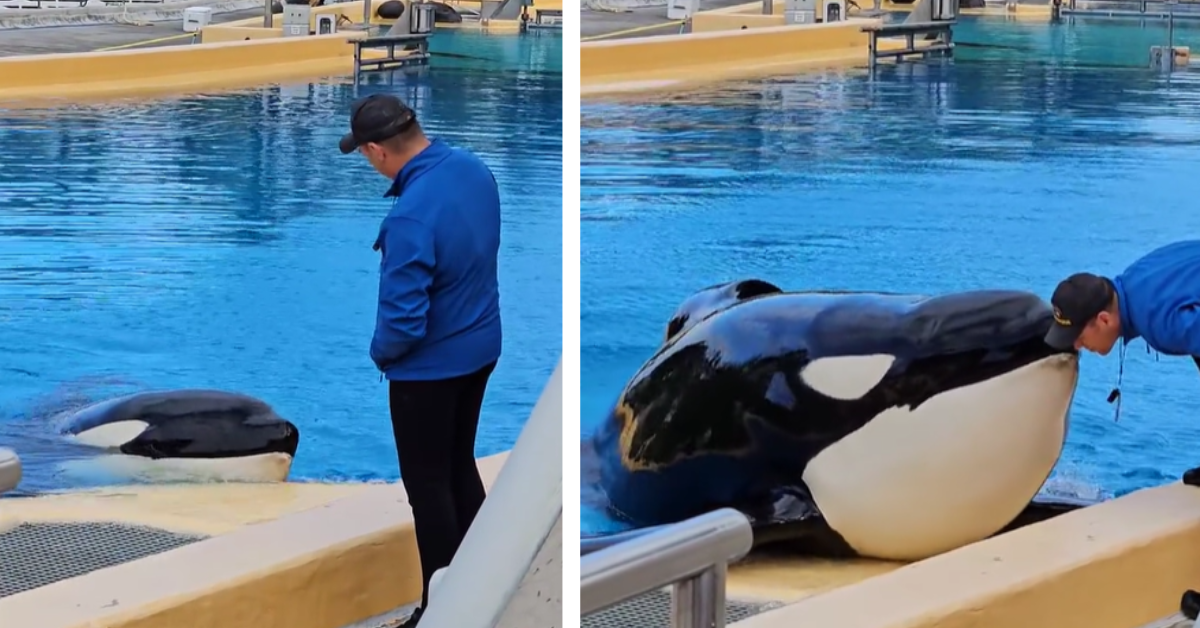Captive Orca Keto Has Died At 29 — His Cause of Death Remains A Mystery
The orca died after a lifetime in captivity.
Published Nov. 26 2024, 4:36 p.m. ET
Animal lovers are in mourning after officials at Loro Parque, a zoo in northern Tenerife, Spain, announced the death of 29-year-old orca whale Keto. The park revealed the sad news in a blog post on Nov. 22, 2024.
Born into captivity in SeaWorld Orlando, the mammal spent all of his life in a small pool, cruelly forced to perform for human park goers.
Keto also notably exhibited distress and unusual behaviors before his death, one more example of the mistreatment animals face imprisoned in marine parks and not in the wild where they belong.
You can learn more about Keto below, including a previous encounter that left one human dead and what advocates with People for the Ethical Treatment of Animals (PETA) had to say about the whale.
What caused Keto the orca's death?
A necropsy took place over the weekend of Nov. 23, 2024, according to the Daily Mail. While 21 veterinary experts took part in the massive inspection of Keto's 6,600 pound body, they were unable to share the cause of the orca's death when they finished.
Additional testing was ordered and the vets hope to have more information about what happened to Keto by the start of December.
That said, the Daily Mail notes that Keto had been exhibiting unusual behavior ahead of his death.
"In recent days, Keto had shown signs of discomfort," a Loro Parque representative said in a statement. "Our veterinary team and international specialists took every action they could to help. Sadly, despite intensive efforts and exhausting all available resources, this tragic outcome could not be prevented."
Loro Parque claimed Keto's large physique played a role in the park's inability to detect what was ailing him, since his size made it challenging to use imaging tools like ultrasounds and CT scans to see what's going on internally.
The park said they are working with experts from the University of Las Palmas de Gran Canaria for more answers.
According to NOAA (National Oceanic and Atmospheric Administration) Fisheries, the average lifespan of an orca in the wild can extend anywhere from 30 to 60 years for males and 50 to 90 years in females. Had Keto been released into the wild or allowed to live freely, he would likely have lived nearly twice as long.
Who did Keto the orca kill?
Keto was first sent to Loro Parque in 2006 on "loan" to be part of an exploitive breeding program, where Keto was bred to his own niece, Kohana. SeaWorld was reportedly heavily involved in the keeping of Keto and three other captive orcas in Loro Parque until 2009.
In 2009, Keto had a fatal interaction with then-trainer Alexis Martinez. Martinez had been in the middle of a show with the orca when Keto's natural instinct appeared to take over, and the whale went after him similarly to how he would've hunted prey in the wild.
Unfortunately, the resulting incident cost Martinez his life, and according to PETA, it also led SeaWorld to distance themselves from Loro Parque, eventually relinquishing ownership of Keto in 2018.
PETA hypothesized this distancing may have had devastating consequences for Keto and the other orcas in the park's care, since PETA advocates witnessed Keto expressing symptoms of distress when they visited Loro Parque in person.
Per PETA, Keto was seen biting concrete, something that caused his teeth to become worn down into nubs.
He was also witnessed floating around listlessly, which is an activity that observers believed could've been born out of depression or boredom. Unfortunately, it doesn't seem that anyone will ever know which was the case.
Keto is survived by just one of his three calves, an orca named Adán who will continue to perform at the park until he is either released or meets the same fate as his father. Animal advocates hope that after this high-profile death, those who keep orcas in captivity for the sole purpose of human entertainment will reconsider.

